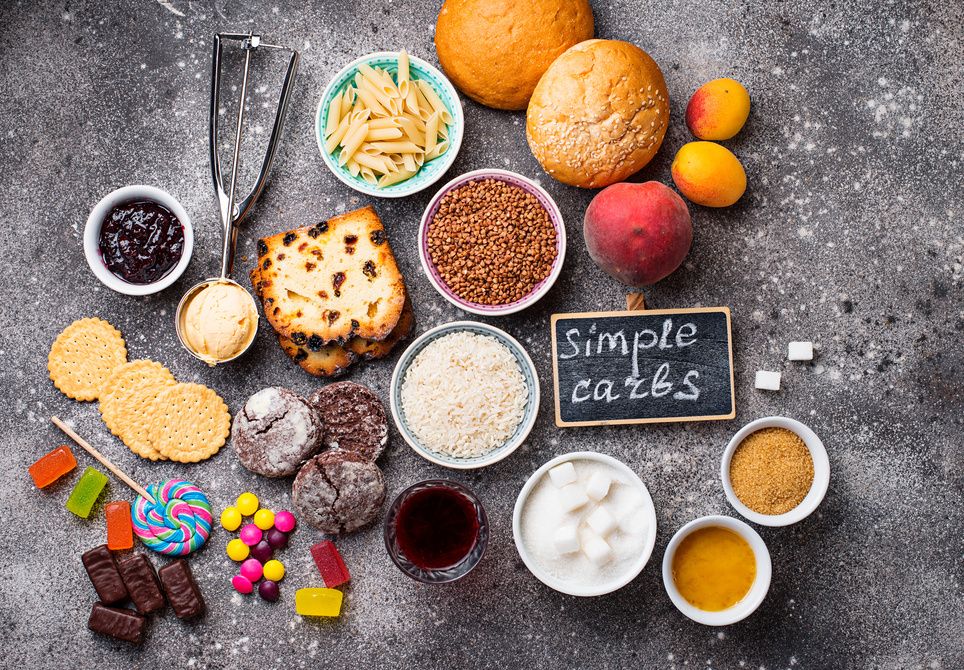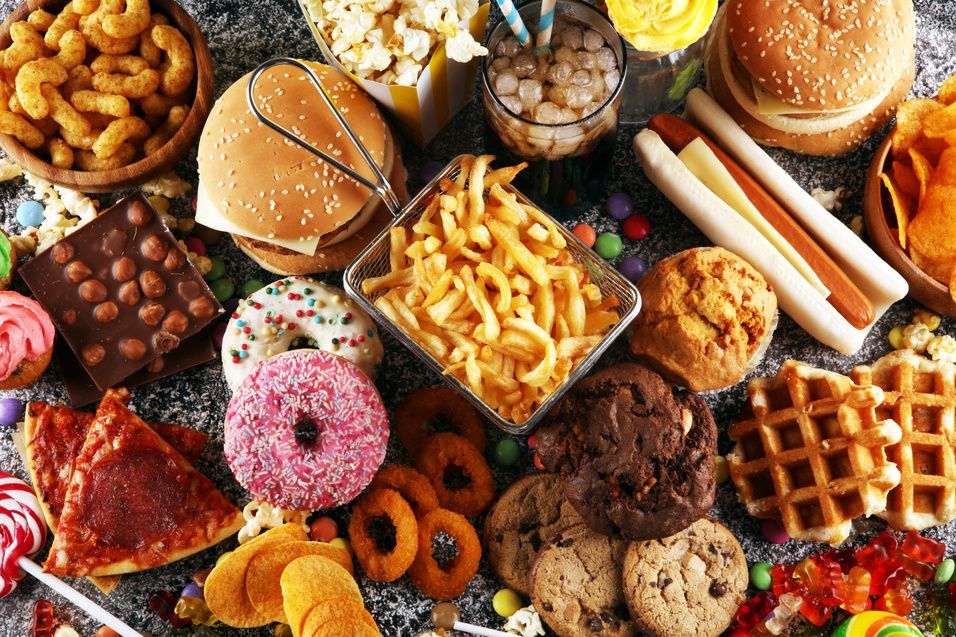Do you remember being a kid and life was so care-free, novel and exciting? Christmas festivities were filled with quality sugary candies, squares and shortbread cookies. Easter was characterized by egg hunts and sickeningly copious quantities of chocolate, or ice cream and popsicles to cool off on a sweltering summer day. It is a wonder how our teeth came out of childhood unscathed and not riddled with cavities. However, all jesting aside, excessive sugar consumption and the poor health ramifications that it causes have become serious public health issues. How can this be prevented, and why is sugar so bad and unhealthy anyway?
A sweet brief on sugar
To begin, sugar is not inherently evil or unhealthy and, in fact, it is vitally important. Common carbohydrates we consume are a bagel, soda, candy, porridge, wholewheat bread, beans, broccoli, and grapes. They are all digested into simpler and less complex molecules until they finally become molecules of sugar. Some cells, such as red blood cells, are completely reliant on glucose (sugar) for energy. For example, neurons of the central nervous system preferentially use glucose, with the brain requiring 20% of the glucose we consume.
What sets various carbohydrates apart is the food matrix itself. For instance, there is a stark difference between consuming a glazed donut and an orange or a lentil salad. The former is made with enriched wheat flour, deep fried dough and tons of refined sugar (sucrose). The latter are whole foods that contain many micronutrients such as B vitamins and vitamin C and are rich in complex carbohydrates and indigestible fibers.
Complex carbohydrates such as polysaccharides and fiber, slow digestion of carbohydrates, which slows the concentration of blood glucose. However, refined carbohydrates, such as those from white bread, have the fibrous bran removed. They leave behind the starchy endosperms which are digested easily and lead to comparatively high spikes in blood sugar. Candy, baked goods and junk foods of that ilk, are composed primarily of simple sugars such as sucrose and fructose, which are easily digested, leading to blood sugar hikes.
Signs you may be over-indulging in the sweet stuff
Some indications you may be over-doing it with sweets and refined carbohydrates include:
- Hunger: foods lacking fiber can leave you feeling hungry.
- Constantly eating sweets may make other foods seem bland and unpalatable, leading you to crave sweets.
- Excessive calories, such as sugar, may be stored as fat when consumption exceeds need.
- Arthritis: diabetes is a risk factor in the development of arthritis. A combination of factors, such as obesity and damaging inflammation from high blood sugar, can cause joint pain and it may even cause a flare up in rheumatoid. One way to alleviate pain and inflammation in affected joints, is to consider a supplement like JointFuel360.
- Fatigue and low energy are caused by blood sugar spikes and accompanying energy crashes because blood sugar is not sustained after a meal.
- Cavities: sugar can stick to your teeth. The acid created by bacteria that breed in the mouth, using sugar to power their metabolisms, can degrade tooth enamel, ultimately causing cavities.

Affects of Excessive Sugar Intake
Diabetes
Frequent high blood glucose (hyperglycemia) may in turn cause excessively high secretions of the pancreatic hormone, insulin. Insulin is released in response to an elevation in blood glucose and is responsible for moving glucose into cells to be consumed for energy. However, hyperglycemia can cause reduced sensitivity or resistance to insulin. This can exhaust and cause dysfunction in the insulin secreting cells. It also leads to abnormalities in blood sugar called glucose intolerance. This destabilizing effect characterizes pre-diabetes and type 2 diabetes.
The risk factors for developing type 2 diabetes include:
- Obesity (over 80% of those diagnosed)
- Family history
- Physical inactivity
- Race (African American, Indigenous, Asian, Pacific Islander, and Hispanic populations)
- Gestational diabetes in pregnant women
- History of heart disease or hypertension
- PCOS (polycystic ovarian disease)
Symptoms of diabetes include:
- Frequent urination
- Excessive thirst
- Frequent candidiasis fungal infections
- Increased hunger
- Fatigue
- Blurry vision

Diabetes, sedentary behavior, and poor dietary habits such as consuming excessive sugar, with a limited selection of healthy foods, can also cause a host of other diseases associated with diabetes, including:
- Cardiovascular disease
- High blood pressure
- Inflammation and damage and disease to the vasculature in the gut, eyes, feet and kidneys
- Peripheral artery diseases
- Non-alcoholic fatty liver disease
What are the recommendations?
The acceptable macronutrient distribution range recommends that carbohydrates should amount to approximately 45-65% of one’s daily intake. Likewise, the American Heart Association, recommends that men and women not surpass 9 teaspoons and 6 teaspoons daily, respectively. Moreover, Health Canada recommends limiting added sugar intake to less than 5% of your daily caloric intake. Either way, it is best to limit your intake of sweetened beverages like pop and juice, refined carbohydrates, baked goods, chocolates, candy and convenience foods. Instead, whole foods should be chosen, such as non-starchy vegetables, fruit, whole grains, legumes and other healthy foods such aFoods lean proteins and healthy fats from fish, nuts and seeds. To increase satisfaction and decrease food cravings, it is best to consume foods that have fat, protein, and complex carbohydrates, which also help slow digestion and regulate blood sugar.
There is certainly a reason for concern about eating excessive amounts of sugary, processed foods as it is associated with many adverse effects and diseases, but that is no reason to swear off all sugar. You may have your cake and indeed eat it too, just maybe consider a smaller portion.
References
Canada, H. (2021, January 5). Section 1 foundation for healthy eating. Canada Food Guide. Retrieved March 26, 2022, from https://food-guide.canada.ca/en/guidelines/section-1-foundation-healthy-eating/
Hantzidiamantis, P. J. (2021, September 20). Physiology, Glucose. StatPearls [Internet]. Retrieved March 26, 2022, from https://www.ncbi.nlm.nih.gov/books/NBK545201/
How much sugar is too much? www.heart.org. (2021, January 11). Retrieved March 26, 2022, from https://www.heart.org/en/healthy-living/healthy-eating/eat-smart/sugar/how-much-sugar-is-too-much
Nutrition therapy. My Site – Chapter 11: Nutrition Therapy. (2018). Retrieved March 26, 2022, from https://guidelines.diabetes.ca/cpg/chapter11
Revelant, J., Blanton, K., Upham, B., Bedosky, L., Migala, J., Robinson, K., & Kennedy, K. (2021). 12 potential signs you’re eating too much sugar. EverydayHealth.com. Retrieved March 26, 2022, from https://www.everydayhealth.com/diet-nutrition/potential-signs-youre-eating-too-much-sugar/













